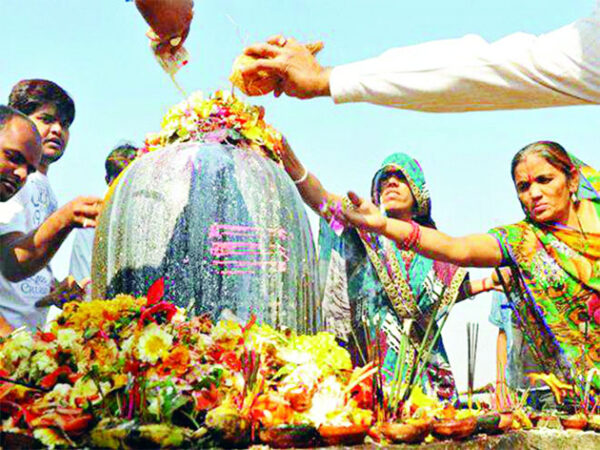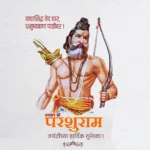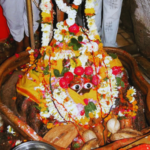1. About Prashuram Mahadev Temple Pali -
- Nestled in the scenic landscapes of Rajasthan, the Parshuram Mahadev Temple Pali is a beacon of spirituality and devotion. Located in Desuri Tehsil, Pali District, this ancient temple dedicated to Lord Parshuram, the sixth avatar of Lord Vishnu, attracts countless devotees and tourists each year. Parshuram Mahadev Temple PaliThe temple is not only a religious sanctuary but also a testament to the rich cultural and historical tapestry of the region.Renowned for its natural Shivalinga and a continuous stream of water that flows nearby, the Parshuram Mahadev Temple Pali is steeped in legends and traditions. It is believed that Lord Parshuram himself meditated and performed penance here, carving the temple out of the rock with his divine axe. This blend of natural beauty and divine presence makes the temple a significant pilgrimage site, drawing visitors from across the country.The temple becomes particularly vibrant during festivals like Parshuram Jayanti and Maha Shivratri, when devotees flock in large numbers to offer their prayers and participate in the celebrations. Beyond its religious significance, the Parshuram Mahadev Temple Pali offers a peaceful retreat, allowing visitors to connect with nature and experience the spiritual essence of this ancient site Parshuram Mahadev Temple.




2. Parshuram Mahadev Temple Pali: Key Information-
| Aspect | Details |
|---|---|
| Location | Desuri Tehsil, Pali District, Rajasthan, India |
| Timing | 5:00 AM - 8:00 PM |
| Entry Fee | Free |
| Fun Fact | The temple is located inside a cave, and devotees have to descend 500 steps to reach the sanctum sanctorum. It's believed that Lord Parshuram meditated here. |
| Dress Code | Modest clothing required; shoulders and knees must be covered. Traditional attire preferred. Footwear must be removed. Women should consider covering their heads. |
| Photography | Photography may be restricted inside the temple premises. Check with temple authorities before taking pictures. |
| Prasad | Offerings such as flowers, fruits, and incense sticks are common. Follow guidelines provided by temple staff. |
3. Festivals and Celebrations-

Akshaya Tritiya
• Akshaya Tritiya is one of the most auspicious festivals celebrated at the Parshuram Mahadev Temple. This day, considered highly favorable in the Hindu calendar, is believed to bring eternal prosperity and good fortune. On Akshaya Tritiya, the temple is adorned with elaborate decorations, and special rituals and prayers are conducted to honor Lord Parshuram. Devotees flock to the temple to offer their prayers and seek blessings, believing that their wishes will be fulfilled on this sacred day..

Parshuram Jayanti-
• Parshuram Jayanti is another significant festival observed with grandeur at the Parshuram Mahadev Temple. This festival marks the birth anniversary of Lord Parshuram, the warrior sage and the sixth avatar of Lord Vishnu. Celebrated on the third day of the Shukla Paksha (waxing phase of the moon) in the month of Vaishakh (April-May), Parshuram Jayanti is a day of immense religious importance.

Navaratri
• Throughout the year, the Parshuram Mahadev Temple hosts various other celebrations and religious events. Navaratri, the festival dedicated to the worship of the goddess Durga, sees a significant influx of devotees who visit the temple to seek blessings and participate in the festive activities. The temple is decorated with lights and flowers, and special prayers are conducted each day of the festival.

Mahashivaratri
• During Mahashivaratri, the night dedicated to Lord Shiva, the temple witnesses a surge of devotees who observe fasts and offer prayers. The connection to Lord Shiva through Parshuram, who is considered his ardent devotee, adds to the temple's significance on this auspicious night. Devotees perform abhisheka (ritual bathing) of the deity with milk, honey, and other sacred substances, chanting mantras and seeking divine grace.
4. Availability of Prasad at Parshuram Mahadev Temple-
- In Parshuram Mahadev Temple, the prasad material, typically consisting of sacred offerings like fruits, sweets, and sometimes small tokens blessed by the deity, is usually available near the temple premises. Here’s where you can typically find prasad:
| 1. | Near the Temple Entrance: There are often stalls or small shops set up near the entrance or within the temple complex where visitors can purchase prasad offerings. |
| 2. | Inside the Temple: Sometimes, prasad may also be offered inside the temple itself, either by priests or temple volunteers. |
| 3. | Local Shops: Nearby villages or towns, such as Kumbhalgarh, may have shops selling prasad ingredients or pre-prepared prasad items that visitors can purchase before their trek to the temple. |
| 4. | Offerings to the Deity: Visitors can also bring their own offerings like fruits, flowers, or sweets to offer to Lord Parshuram at the temple. |
5. Highlights of the Parshuram Mahadev Fair
| Religious Ceremonies and Rituals | Special pujas (worship ceremonies) and aarti (rituals involving light) are conducted at the temple. These ceremonies are attended by a large number of devotees seeking blessings from Lord Parshuram and Lord Shiva. |
| Cultural Programs | The fair often features cultural programs such as folk music and dance performances, showcasing the local culture and traditions of Rajasthan. |
| Market Stalls | Temporary stalls are set up around the temple premises selling a variety of items such as religious artifacts, souvenirs, handicrafts, and local delicacies. |
| Food Offerings | Prasad distribution is more elaborate during the fair, with devotees receiving blessed food items like sweets, fruits, and sometimes meals cooked as part of the temple offerings. |
| Fair Atmosphere | The fair creates a vibrant and festive atmosphere with colorful decorations, traditional attire worn by attendees, and the scent of incense and flowers filling the air. |
| Pilgrimage and Community Gathering | It's a time when people from nearby villages and towns come together to celebrate and participate in the religious and cultural festivities, fostering a sense of community spirit. |
- History and Significance-
- The Parshuram Mahadev Temple stands as a testament to the rich mythology and religious lore of Hinduism. Legend has it that Lord Parshuram, the sixth incarnation of Lord Vishnu, meditated at this very site, seeking penance for his actions. The temple, nestled amidst the serene landscapes of Rajasthan, attracts devotees and tourists alike, drawn by its spiritual aura and historical importance.
Traditions and Rituals
- Morning Rituals
- The day begins with devotees gathering at the temple before sunrise. Abhishek, the ceremonial bathing of the idol of Lord Parshuram, takes place amidst the chanting of Vedic hymns and prayers. Devotees offer flowers, coconut, and vermillion to seek blessings and purification.
2. Puja Ceremonies
- Elaborate puja ceremonies are conducted throughout the day, invoking the blessings of Lord Parshuram for prosperity and protection. Priests perform havan (fire rituals) to purify the atmosphere and appease the gods, accompanied by the rhythmic sounds of mantras echoing through the temple precincts.
Cultural Performances
- Devotional Songs and Bhajans
- The air resonates with devotional songs and bhajans, sung in praise of Lord Parshuram. Renowned artists and local musicians come together to create a spiritual ambiance, captivating the hearts of devotees and visitors alike.
2. Traditional Dances
- Rajasthani folk dancers grace the occasion with their vibrant performances, showcasing the cultural heritage of the region. Dressed in colorful attire adorned with intricate patterns, dancers weave tales of devotion and reverence through their graceful movements.
Festival Atmosphere
- Decorations and Illuminations
- The temple and its surroundings are adorned with colorful decorations and festive lights, enhancing the celebratory mood. Rangoli patterns and floral designs embellish the pathways, creating a visual spectacle that adds to the festive atmosphere.
2. Community Participation
- Families and communities come together to celebrate Parshuram Jayanti, fostering a sense of unity and camaraderie. The temple grounds become a gathering place for people of all ages, sharing in the joyous festivities and spiritual fervor.
| Attraction | Time from Parshuram Mahadev Temple | Fun Fact | Distance (Approx.) | Entry Fee |
|---|---|---|---|---|
| Kumbhalgarh Fort | 1 hour | Second longest wall after the Great Wall of China | 40km | INR 15 (Indian), INR 200 (Foreigners) |
| Ranakpur Jain Temple | 1 hour 15 minutes | Intricate marble carvings and 1,444 marble pillars | 60km | INR 100 (Indian), INR 200 (Foreigners) |
| Muchhal Mahavir Temple | 1hour | Statue of Lord Mahavir with a mustache (muchhal) | 30km | free |
| Kumbhalgarh Wildlife Sanctuary | 1hour | Home to a variety of wildlife species | nearby | INR 50 (Indian), INR 300 (Foreigners) |
| Sita Mata Wildlife Sanctuary | 1.5hour | Dedicated to Goddess Sita and rich in biodiversity | nearby | INR 20 (Indian), INR 100 (Foreigners) |
- Kumbhalgarh Fort To Parshuram Mahadev Temple Distance
- Rankpur Jain To Parshuram Mahadev Temple Distance
- Muchhal Mahavir To Parshuram Mahadev Temple Distance
- Kumbhalgarh wildlife To Parshuram Mahadev Temple Distance
- Sita Mata Wildlife To Parshuram Mahadev Temple Distance
| city | Distance (Km) | Travel Time (Hours) | National Highway (NH) |
|---|---|---|---|
| Udaipur To Parshuram Mahade Temple Distance | 103km | 2hrs | NH27 |
| Jaipur To Parshuram Mahadev Temple Distance | 349km | 6hrs | NH58 |
| Jodhpur To Parshuram Mahadev Temple Distance | 145km | 2hrs | NH62 |
| Ajmer To Parshuram Mahadev Temple Distance | 217km | 4hrs | NH58 |
| Mount abu to Prashuram Mahadev Temple Distance | 134km | 3hrs | RJ SH62 |
| Kota To Parshuram Mahadev Temple Distance | 323km | 6hrs | NH758 |
| Rajsamand To Parshuram Mahadev Temple Distance | 68km | 1hrs | NH58 |
| Chittorgarh To Parshuram Mahadev Temple Distance | 178km | 4hrs | NH 785 |
| State | Distance | Travel Time (Hours) | National Highway (NH) |
|---|---|---|---|
| Gujarat To Parshuram Mahadev Temple Distance | 408km | 8hrs | NH27 |
| Madhya Pradesh To Parshuram Mahadev Temple Distance | 818km | 16hrs | NH156 |
| Maharashtra To Parshuram Mahadev Temple Distance | 921km | 17hrs | NH52 |
| Delhi To Parshuram Mahadev Temple Distance | 684km | 12hrs | NE4 |
| Punjab To Parshuram Mahadev Temple Distance | 822km | 13hrs | Jamnagar Expy |
| Haryana To Parshuram Mahadev Temple Distance | 625km | 11hrs | NH58 |
9. How to Reach
- • By Air : The nearest airport is in Udaipur, approximately 98 kilometers from the temple. From Udaipur, you can hire a taxi or use local transportation to reach the temple.
- • By Train :The closest railway station is in Falna, about 65 kilometers away. Regular trains connect Falna to major cities in India. From the station, taxis and buses are available to take you to the temple.
- • By Road :The temple is well-connected by road. You can drive or hire a taxi from nearby towns such as Sadri or Falna. Regular bus services also operate from major cities in Rajasthan.
¸ Best Time to Visit
- The ideal time to visit the Parshuram Mahadev Temple is during the cooler months, from October to March. During this period, the weather is pleasant, making it comfortable to explore the temple and its surroundings. Avoid visiting during the peak summer months, as temperatures in Rajasthan can soar significantly.
¸ Weather
- The best time to visit is during the cooler months, from October to March, to avoid the summer heat.
- Road Access:
- The temple is reachable by road, typically accessed from Kumbhalgarh, which is about 14 kilometers away. From Udaipur, it’s approximately 98 kilometers.The road journey takes you through scenic landscapes of the Aravalli hills.
2. Trekking to the Temple:
- After reaching the base point near the temple, visitors need to descend around 500 steps to reach the cave temple.The trek is manageable for most visitors, but it’s essential to wear comfortable footwear and carry water, especially during warmer months.
3. Accessibility Challenges:
The path can be challenging during the monsoon season due to rain and slippery conditions. Visitors should exercise caution and check local conditions before planning a visit.Elderly visitors or those with mobility issues may find the trek to the temple challenging. It’s advisable to inquire locally about any alternative access arrangements if needed.
4. Local Guidance and Assistance:
- Local guides and caretakers at the temple can provide information about current accessibility conditions and assist visitors as needed.Facilities for rest and basic amenities are available near the temple area, but they are limited, so it’s wise to plan accordingly.
Personal Safety
- Stay Alert: Always be aware of your surroundings. Crowded places like temples can sometimes be targets for pickpockets. Keep your belongings close and secure.
- Travel in Groups: If possible, travel with companions. It is safer and more enjoyable to explore the temple and its surroundings with family or friends.
- Emergency Contacts: Keep a list of emergency contact numbers, including local police, your country’s embassy, and nearby medical facilities.
Respectful Behavior
- Cultural Sensitivity: Respect local customs and traditions. Dress modestly and behave respectfully within the temple premises.
- Photography: Ask for permission before taking photographs of people or during religious ceremonies to avoid offending anyone.
Emergency Services
- Locate Services: Identify the nearest hospitals, police stations, and other emergency services upon arrival. Knowing their locations can be crucial in case of an emergency.
- Local Assistance: Don’t hesitate to seek help from local authorities or temple staff if you encounter any issues or need assistance.
3. Secure Accommodation
- Book in Advance: Secure your accommodations before arriving, especially during peak seasons and festivals.
- Check Reviews: Choose hotels or lodges with good reviews regarding safety and cleanliness. If staying in dharamshalas, ensure they are well-maintained and managed.
- Lock Your Room: Always lock your hotel room when you leave and use any available safety deposit boxes for valuables.
